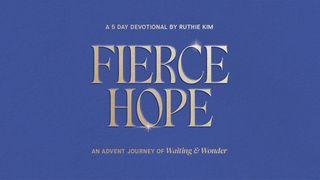Delve Into The ProphetsSample

DAY 24 – JOEL
The book of Joel was written for a specific occasion, and it uses this occasion to deliver a powerful spiritual message. A swarm of locusts has overrun the land of Judah and eaten everything in sight. The book begins with a description of this devastation, observing that not enough remains even for grain and wine offerings in the temple.
After calling for the people to repent in response to this disaster, the book then offers a detailed description of the locust swarm itself. It describes the locusts as if they were an invading army, with God at their head. Joel asserts that the “day of the Lord,” the day of judgment warned about throughout the prophetic tradition, has come. He renews his call for repentance through fasting, community prayer, and heartfelt contrition. He promises that in response, God will not only drive the locusts away, but restore more than the locusts have devoured. And he foretells even greater blessings: God will defeat all of the nations that would oppose his people but pour out his Spirit upon “the survivors” in Judah. If the people will “return to the Lord” with all of their hearts, they will not only see the return of their prosperity, but experience unprecedented spiritual blessings as the “day of the Lord” arrives.
While the occasion of the book of Joel is clear, its exact date is difficult to determine. Unlike most prophetic works, it isn’t situated in the reign of one or more kings. Joel provides no information about himself other than that he was the “son of Pethuel.” Conclusions about when he prophesied depend largely on what evidence is considered. The placement of the book in the Hebrew Bible between Hosea and Amos, for example, suggests that Joel was one of the earliest prophets. However, the book of Joel may have been put just before Amos on the basis of a “catchword” principle. It says near its end that “the Lord will roar from Zion and thunder from Jerusalem,” and the beginning of Amos says “the Lord roars from Zion and thunders from Jerusalem.” Literary evidences within Joel itself suggest a much later date. The book actually echoes the other prophets in over a dozen places, typically citing their most characteristic phrases. If these are meant to be quotations or allusions, they may be intended to show that the entire prophetic tradition lies behind the book’s message of warning and promise. This would mean that Joel came after most of the other prophets.
Historical references within the book support this conclusion. It appears to have been written after the people of Judah were sent into exile, since it says, “they scattered my people among the nations,” but also after the temple had been rebuilt by those who returned, since it refers to “the house of the Lord.” Its repeated references to “Judah and Jerusalem” are appropriate to such a time, when the small community of returnees was centered on the capital and its temple. Since the book speaks of the destruction of Sidon, which took place in 351 BC, as still in the future, it wasn’t written after that date. The setting is probably Judah in the mid-400s BC. This would make Joel roughly a contemporary of Malachi, meaning that one of the last of the prophetic books sums up the entire prophetic tradition as it looks forward to the day when the Lord will “pour out [his] Spirit on all people”—a prophecy that the New Testament writers say was fulfilled in their own day, as the big story of God reached its culmination with the coming of Jesus.
PRAYER: Thank You for Your Word, Lord. And thank You for the gift of Your Son.
Scripture
About this Plan

The Old Testament of the Bible is broken into three major sections, the second of which is known as the Prophets. If you didn’t know that, imagine all of the other interesting things you’ll learn in this reading plan as you explore the purpose, context, and background of this fascinating and unique part of God’s Word.
More
We would like to thank Biblica for providing this plan. For more information, please visit: http://www.biblica.com
Related Plans

God Our Refuge

Lessons From Some Hidden Heroes in the Bible

How Does My Faith Really Work in Everyday Life?

Hope in Creator’s Promises

21 Days Prayer & Fasting "Align in Promise"

Fierce Hope: An Advent Journey of Waiting and Wonder

Breathe: Stop Striving. Start Living in Holy Spirit Power.

TellGate: Mobilizing the Church Through Local Missions

The Father Lens: Helping Your Kids See Who God Is Through Who You Are
